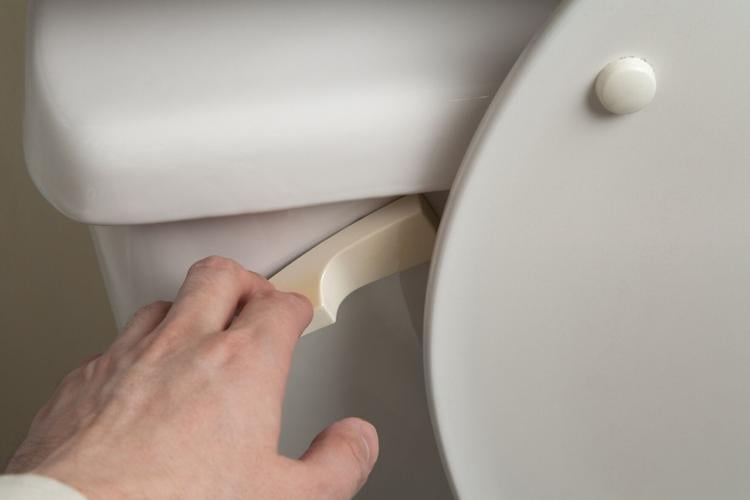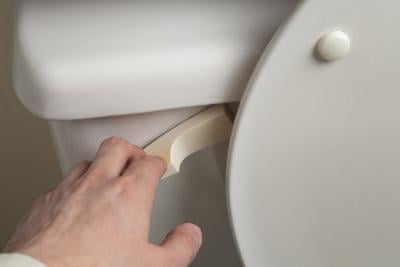Any bathroom harbours millions of bacteria in every passing moment.
They thrive in the warm, moist folds of a shower curtain left after a morning or nightly rinse. They breed in the soap-scummed residue from handwashing in the sink. And they creep across the door handle, rapidly reproducing to survive for days.
In this microbial minefield, a great conflict rages — dividing households, straining relationships and, perhaps, somewhere, testing civility itself: should the toilet lid be left up or put down when flushing?
Some say it doesn’t matter. Others disagree. To them, the position of the lid is a moral stance, a hygienic must, a porcelain throne from which they won’t budge.
Here’s what experts have to say about the towering question that has sparked debates and caused awkward standoffs in the restroom.
Close the lid or leave it open?Ìý
For Lawrence Goodridge, professor of microbiology at the University of Guelph, the answer is simple: close the lid.
Leaving the toilet lid up when flushing can possibly make you sick, he said, due to toilet plume, which are aerosolized droplets released into the air when a toilet is flushed.
If fecal matter or urine is in the toilet when flushing, the plume can contain pathogens — biological agents that can cause disease — that can be aerosolized into small water droplets and come out of the toilet, he said.Ìý
The risk of getting sick from your towel is very low, experts say, but hygiene is another
“The aerosols can move around the bathroom, drop onÌýaÌýsurface likeÌýthe countertop, like toothbrushes, for example, that you then are going to put into your mouth,” Goodridge said. “That can lead to illness.”
A toilet bowl can contain billions of microorganisms before it’s flushed, according to Goodridge, including bacteria, viruses or parasites.
And although not all bacteria can make people ill, he says, since it’s well-known that fecal material often contains pathogens, it’s best to always close the lid when flushing. EvenÌýa few particles, he adds, can cause human illness.Ìý
Josh Neufeld, a University of Waterloo microbiologist, isn’t as certain. He believes there’s little relative risk associated with leaving the lid up or down, and it’s more a matter of personal preference.Ìý
Viruses that toilet plume contain can still spread out of the gaps of a closed toilet seat, he says, citing a Ìý— making the difference between closing the lid or not insignificant.
People can close the lid if it makes them feel safer, he says, but adds that paranoia about “quite normal” and “common” exposures can actually heighten psychological risk — causing people to fixate on less significant dangers while overlooking more essential hygiene practices like handwashing.Ìý
“My number one thing would be, normally, “Don’t worry about it,’” he said.Ìý
How far can toilet plume travel?Ìý
As not all toilets are created equally, the distance where pathogens can spread varies on the toilet’s strength and size, says Goodridge. But, typically, plume will travel up to two metres away from the bowl.Ìý
Goodridge advises not to leave your toothbrush near the toilet, regardless, instead putting it away in a drawer or using a cover for the brush. However, there’s less concern for items that you won’t come into direct contact with, like a seat cover used for bathroom decor, he says.Ìý
The toilet itself may contain those microorganisms after you flush, but that shouldn’t be an issue for your next bathroom trip as long as you wash your hands and clean your toilet regularly, Goodridge adds.
“There’s no such thing as zero risk,” he said. “What you’re trying to do is reduce the risk. If you reduce the risk enough, then the chance of becoming sick is also reduced.”

Microorganisms that toilet plume contains can potentially end up on other surfaces, like a toothbrush, but a vast majority of those microorganisms aren’t harmful, Neufeld says. Still, Goodridge recommends not to leave your toothbrush near the toilet.Ìý
DreamstimeNeufeld says microorganisms can still potentially end up on other surfaces, like a toothbrush, but a vast majority of those microorganisms aren’t harmful. He said if someone inside your home is ill then you should use “common-sense” approaches to avoid those germs spreading across surfaces, like those in a bathroom.Ìý
“Maybe, if there’s another bathroom, move the toothbrushes there, clean the toilet more frequently,” he said. “And until the person’s recovered, if the sick person can use that bathroom alone, that’s ideal.
“Sometimes that’s not possible. So, just be cleaning things more frequently.”
How can I avoid bacteria from my toilet bowl?Ìý
If using a public toilet — which often don’t have lidsÌý— Goodridge recommends immediately turning your face awayÌýfrom the toilet after flushing and leaving the stall or wearing a mask.
People shouldn’t bring personal items into a public bathroom stall, he said, as they can become contaminated. Thoroughly washing your hands, he says, is always the top priority to reduce any health hazards associated with the bathroom.Ìý
Neufeld also recommends wiping off toilet seats or using protective sheets in busy public spaces, like an airport or doctor’s office. However, in a home, he says cleaning the toilet more frequently is more important to avoid bacteria than closing the toilet lid.
With videos surfacing online of reclining horror stories on flights, travellers and observers
“That’s really the best way to reduce the spread of disease … to use sanitizing cleaner on the surfaces of the toilet and then in the toilet bowl,” he said.Ìý
To him, it’s the shared surfaces within the bathroom that pose further health risks.Ìý
He believes touching the bathroom door handle can present more danger than whether the toilet lid is up or down. Touching the flush handle in a public bathroom is another example, he says.
In those scenarios, he recommends wiping your hand on a pant leg, as “if it was easy to put on your hand, it’s likely easy to remove.”
“That’s the concern point right there because you just wash your hands and … you’re touching the handle on the way out,” Neufeld said about bathroom door handles. “That’s where you’re going to make your contact with the pathogen.”






























To join the conversation set a first and last name in your user profile.
Sign in or register for free to join the Conversation